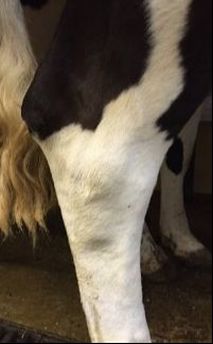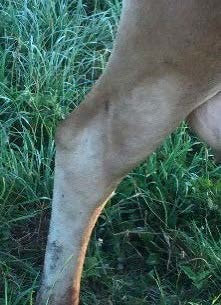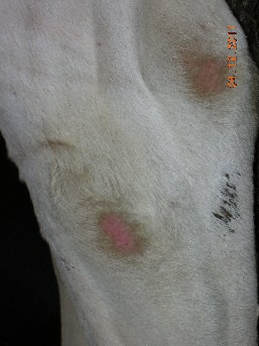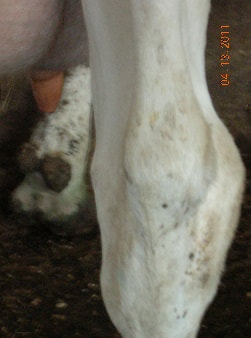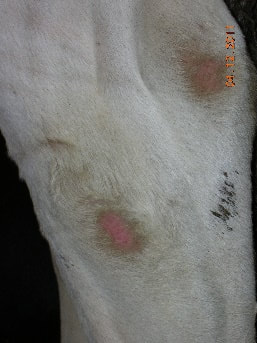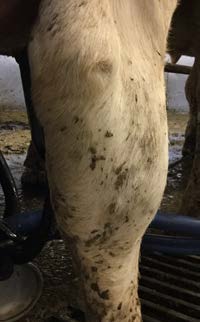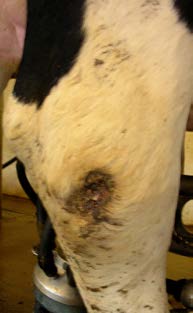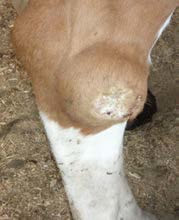Hock Injuries
How to assess:
There are several ways to assess hock injuries. Here, we provide 2 scoring systems that are commonly used in the dairy industry. You can choose a system that fits your interests and test your repeatability using the associated scoring system.
Dairy Well: hock injury scoring
Score and count only the WORST hock of each cow.
Which animals to assess:
- Lactating cows
- Dry cows
- The number of dry and lactating cows assessed is determined by the sample size calculator
- All cows in hospital pen
- If there is a designated lame cow or chronic pen it must be scored and cows currently in the hospital pen will be evaluated for presence of score 3 lesions to ensure treatment
When to assess:
- Take hock injury scores while lactating cows are being milked in the parlor
- If there is only one group of cows, score the entire group if possible before or after milking if lock-ups are available
- Cows kept in tie stall barns and not normally released after milking will be scored standing in the tie stalls
Goal:
To assess the softness of the resting area.
≤1% of the herd should have severe hock scores (score 3).
National Dairy Farm Program: hock injury scoring
Score and count only the WORST hock of each cow.
Which animals to assess:
- Lactating cows
- Dry cows
The number of animals assessed is determined by the sample size calculator using the total number of animals on the farm.
When to assess:
- Hock lesions can be assessed at any time
Goal:
<5% should score a 3 when hock and knee scores are combined (the most severe score becomes the overall score).
The tests on this website score hocks and knees separately for more practice.
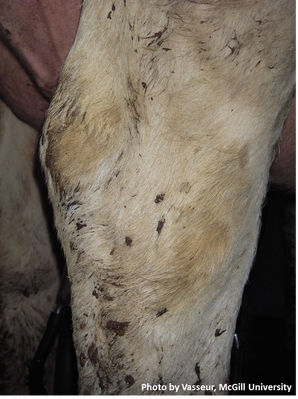
Score 1
- Hair loss less than the size of a quarter (1" or 25mm), with no lesion or swelling
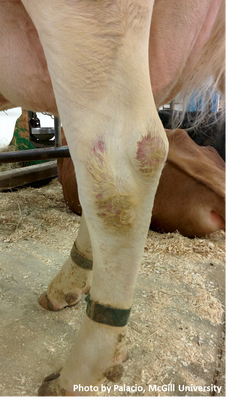
Score 2
- Hair loss at least the size of a quarter; no swelling
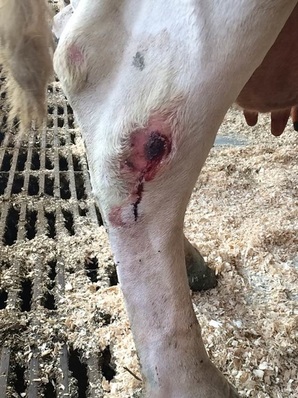
Score 3
- Visible swelling and/or abrasion through the hide
- Lesion may be purulent or bleeding





